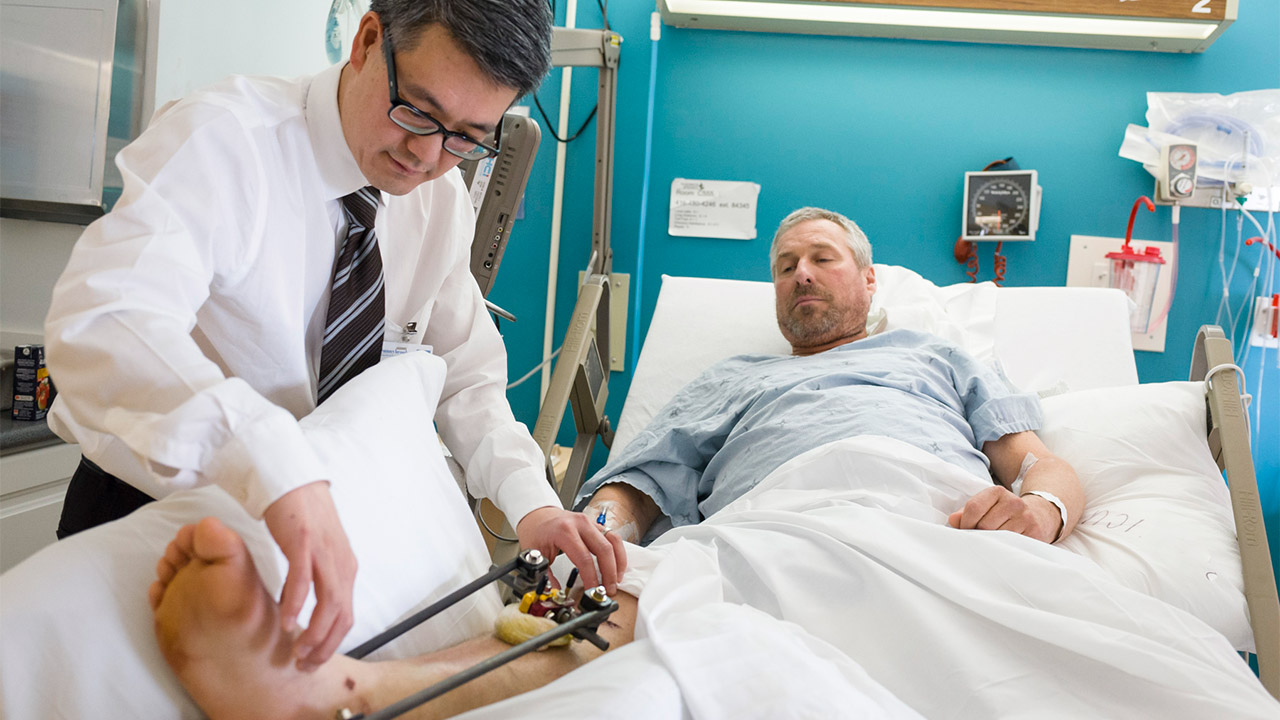You're a what!? 'Physiatrists' help patients get back their lives
The term “physiatrist” — a physical medicine and rehabilitation (PM&R) specialist — has been around for nearly 70 years, originating in the United States, but still the term often gets confused by people, autocorrect and Google searches alike with “psychiatrist” or “physician.” As medical advances are helping us save more lives than ever before, the physiatrist is finally emerging.
“Physiatrists are typically involved in the post-acute care rehabilitation for patients who have suffered an injury or disability,” says Dr. Larry Robinson, Chief of Rehabilitation Services and the St. John’s Rehab program at Sunnybrook. “We work with a team of physiotherapists, occupational therapists, nurses and other health professionals to help evaluate and treat patients whose functional abilities have been impaired so they can get back to their lives.”
But now physiatrists aren’t only in rehab settings. Dr. Robinson and his team are extending their work into acute care to provide early consultations for patients with traumatic injuries, burns and stroke.
“There are more than 1,000 patients admitted to Sunnybrook with severe trauma or burns each year. These patients can be in-hospital for a long time and may have significant disability, but they don’t receive a physical medicine and rehabilitation consultation during acute care,” says Dr. Robinson, also the division director for PM&R at the University of Toronto. “We’re changing that to maximize their quality of life after they’re lives are saved.”
Physiatrists Dr. Ed Hanada and Dr. Matthew Godleski recently joined Sunnybrook to help conduct early consultations for trauma and burn patients, respectively.
“[Physiatrists] are identifying [with patients] any barriers or potential barriers to healing and reintegration into the community,” says Dr. Hanada. “We’re also trying to prevent any secondary complications of their hospital stay, like contractures, pressure ulcers and other consequences of bed rest,” he adds.
Early research has shown that rehabilitation consultations in acute care may reduce length of stay and enhance independent mobility at the time of discharge.
Dr. Matthew Godleski, who is one of fewer than a dozen physiatrists specializing in burn rehabilitation in North America, stresses the value of working with patients early on: “With burns, for example, if you don’t do the right things every day for the first few weeks, you can run into trouble in terms of outcome,” he says. “As scars mature, they tighten and can limit range of motion. Physiatrists can help patients prevent some movement limitations with education and a therapy plan.”
But the value isn’t only physical, adds Dr. Godleski. “Not only can [physiatrists] help plan [a patient’s] path to recovery, but with our expertise we can give patients reassurance early on that they can get back to doing many of the things they were doing in life. It’s not necessarily an easy path, but there’s hope.”
Two days each week Drs. Godleski and Hanada visit their acute care counterparts to help assess and plan a patient’s care along with other members of the health-care team.
In cases where function-implicating decisions need to be made — like deciding whether or not to amputate a severely injured limb — the physiatrist can help explain to patients and their families what each path would look like and how the outcome may impact their day-to-day lives so they can make an informed decision.
Sunnybrook physiatrists are now collecting data to measure the effect their early consults has on length of stay, preventable complications, and ultimately function.






